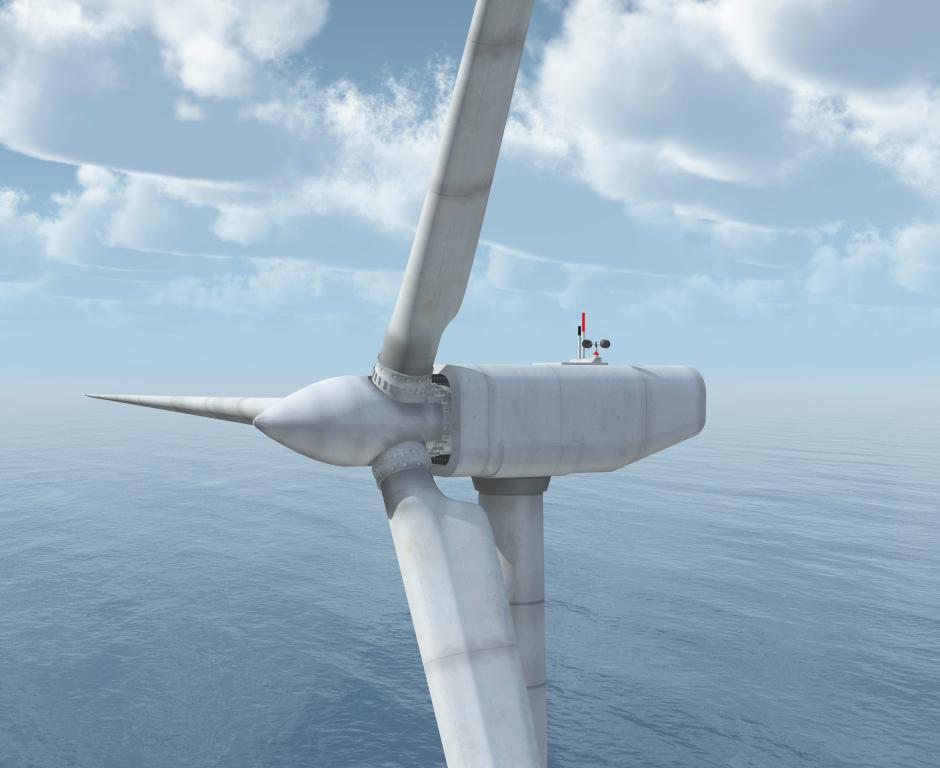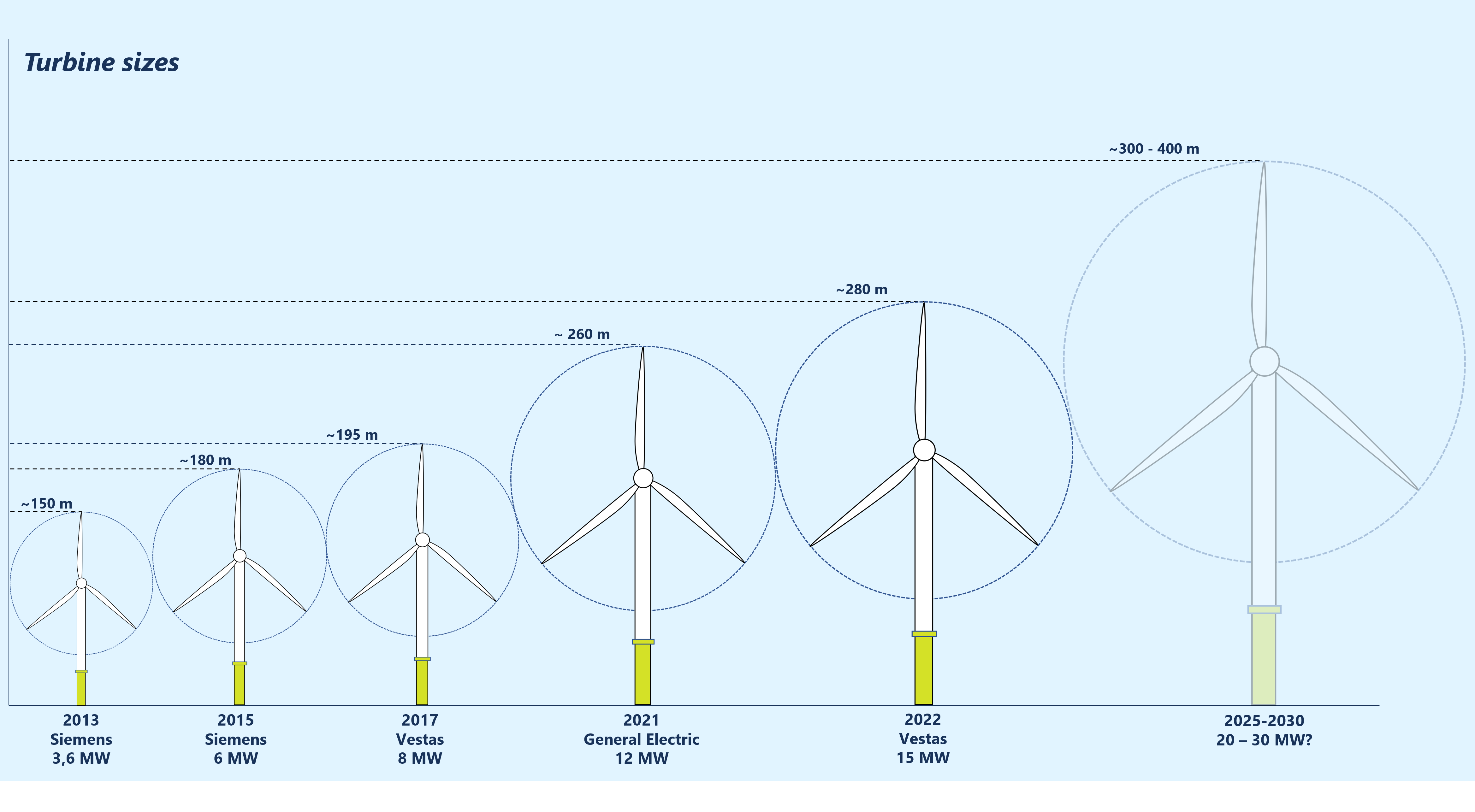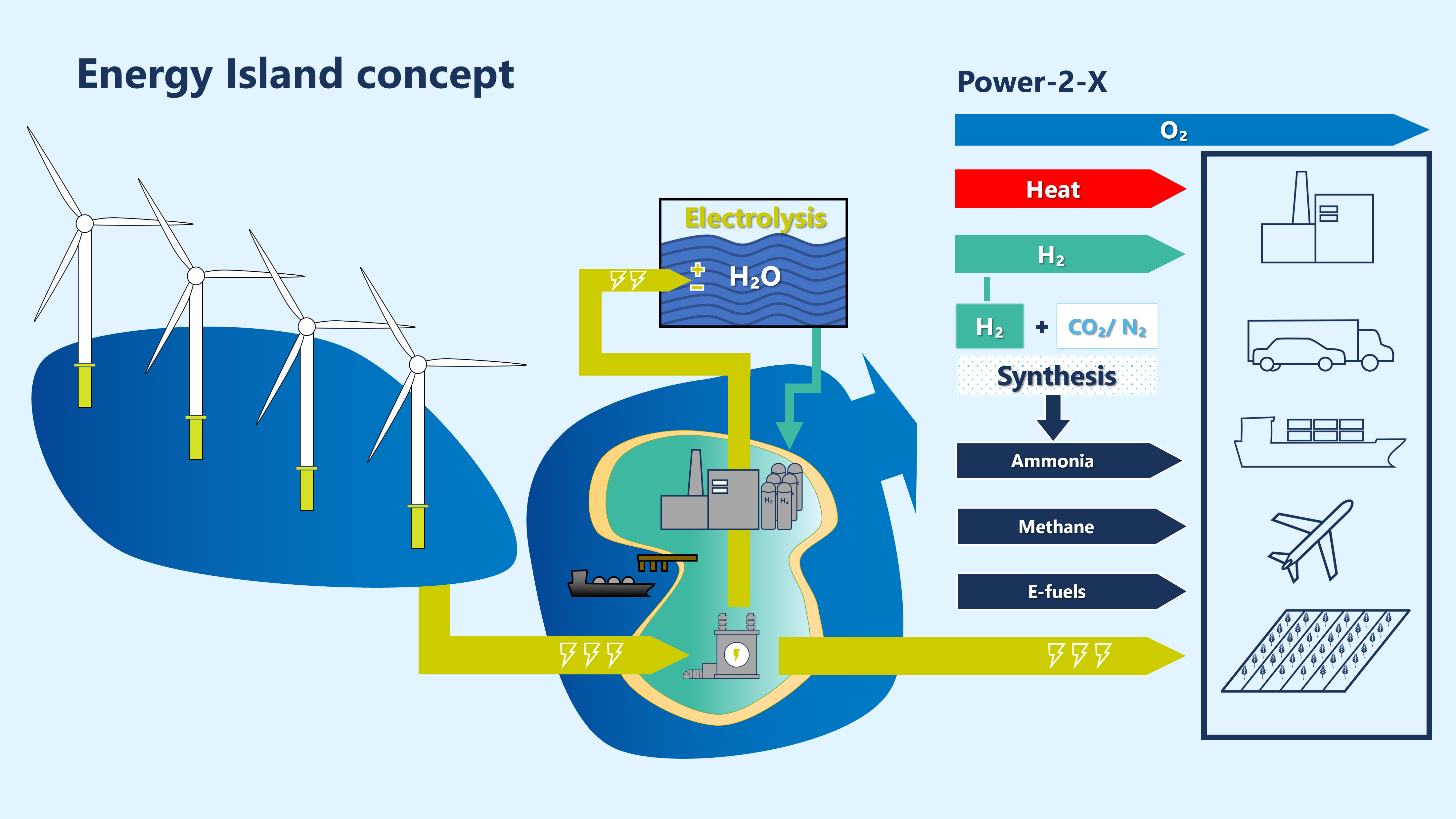Wind turbines
The figure illustrates how the size and capacity of wind turbines have evolved over the past decade. The largest turbines currently have a capacity of 15 MW, but turbine sizes are expected to reach capacities of 30 MW, with heights of 400 meters. At the same time, the production efficiency (capacity factor) of wind farms has improved. With larger and taller turbines being developed, comes the need for newly developed logistics chains and bigger installation vessels, to keep pace with these advancements. The climate conditions in the Nordic region also give rise to technical challenges (ice conditions) that affect the potential capacity that can be built.
The Energy Island concept and Power-2-X
The energy island concept aims to increase the production value of wind farms through energy refinement and distribution. The basic idea is to interconnect the production and optimize it, thereby achieving a higher value. Even for Åland, the concept of energy islands is interesting and considered as an alternative when the utilization rights for the energy areas are auctioned. An energy island can be created to encompass both nearby existing land areas and man-made islands in the vicinity of the offshore wind farm.
Due to the intermittent nature of wind power production and fluctuating market prices, it is relevant to identify solutions for further refinement of electricity into other forms of energy (Power-2-X). Power-2-X is based on the concept of using electricity in an electrolysis process to split water into hydrogen and oxygen. The hydrogen, which is an energy carrier, can then be further refined through various chemical processes.
Within heavy industry, there is a growing demand for green hydrogen. Hydrogen can also be combined with nitrogen to produce ammonia, which can be used as a fuel or in fertilizer production. By combining hydrogen with carbon dioxide, methanol and other hydrocarbon energy carriers can be obtained. Hydrogen can be stored and reconverted into electricity, which despite conversion losses, provides opportunities to balance electricity production and consumption.
Maritime fuel transition
Maritime fuel transition involves a shift from fossil fuels to environmentally friendly alternatives. The International Maritime Organization (IMO) is implementing increasingly stringent emission regulations for the shipping industry to move towards fossil-free fuels. Refining wind power electricity into hydrogen, ammonia, or methanol as possible ship fuels, is currently the most promising options. The future prospect of providing fossil-free fuel from Åland to the fleet of ships in the Northern Baltic Sea and the Gulf of Bothnia in conjunction with an energy island, is a compelling possibility.





